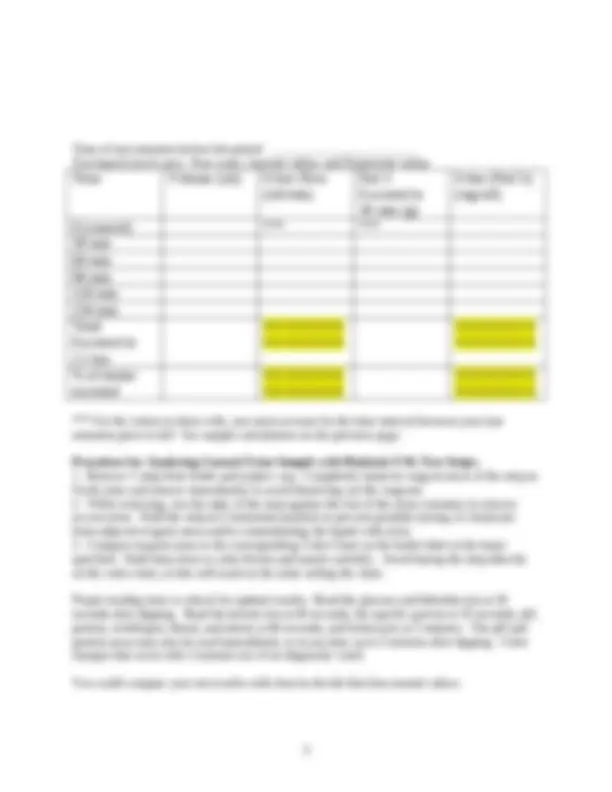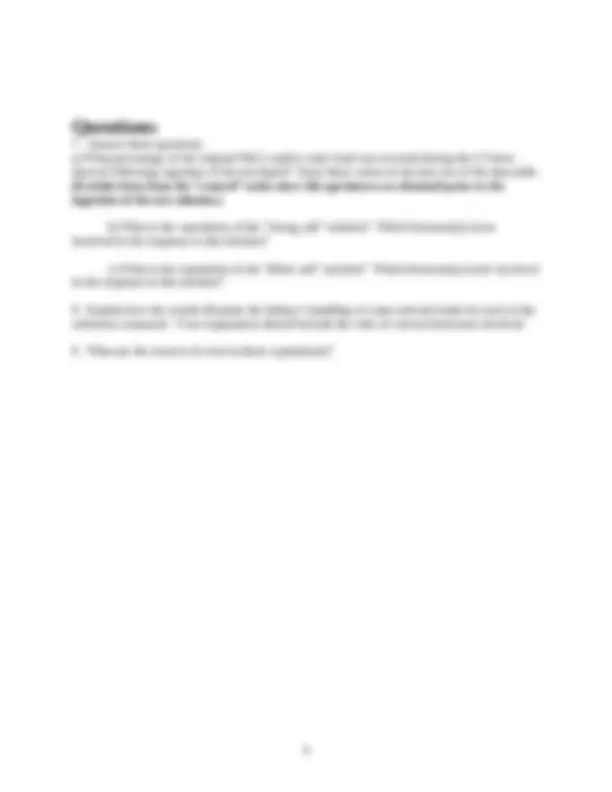




Study with the several resources on Docsity

Earn points by helping other students or get them with a premium plan


Prepare for your exams
Study with the several resources on Docsity

Earn points to download
Earn points by helping other students or get them with a premium plan
Community
Ask the community for help and clear up your study doubts
Discover the best universities in your country according to Docsity users
Free resources
Download our free guides on studying techniques, anxiety management strategies, and thesis advice from Docsity tutors
A laboratory experiment designed to investigate the kidney's role in regulating body fluids' osmolarity. Students will be given an excess water and/or salt load and will collect and analyze their urine samples at regular intervals to measure the volume and concentration of nacl. The goal is to understand how the kidneys respond to different solutions and adjust the excretion of water and salt accordingly.
Typology: Study notes
1 / 4

This page cannot be seen from the preview
Don't miss anything!



Urinalysis.doc 30 November 2008 One of the kidney’s main functions is to regulate the osmolarity of body fluids at around 300mOsm per liter. In these experiments, the kidneys will be presented with an excess water and/or salt load and the response will be monitored by measuring the volume and concentration of the urine produced. Overview of Lab :
ii) Add one drop of 20% potassium chromate and mix thoroughly on Vortexer. iii) Titrate with 2.9% silver nitrate (0.171 Normal) solution dropwise from a burette while agitating the test tube on a Vortex mixer after each drop until a persistent color change is obtained. The end point of titration is a light pinkish brown. Disregard the formation of precipitate; you are looking for a light brown solution. If you “overshoot” the endpoint of the titration, discard the sample into the labeled waste container and start over. iv) Each ml of silver nitrate added represents 1 mg/ml of NaC1 in the urine. v) Calculate: